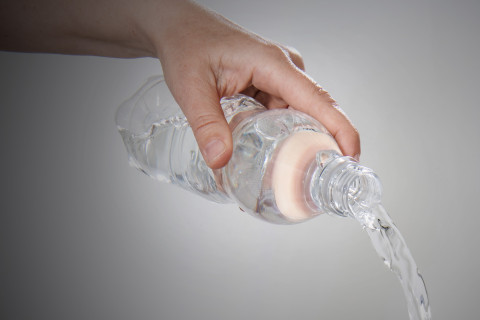We have been using plastic since the 1950s. Due to inadequate waste management, however, more and more microplastic ends up in nature. Microplastic is plastic that is intentionally manufactured in a small size, or small plastic particles that have degraded from larger pieces of plastic. Held at UEF this spring, a small-scale seminar on microplastics provided students with an opportunity to present methods they have developed for microplastics research.
The prevalence, concentrations and accumulation of microplastics are topics of increasing research. Now, however, the focus is shifting towards the effects of microplastics on the environment and human health.
“There is no single answer to these questions yet. However, to our knowledge, no new calls for EU research funding relating to microplastics are opening in the near future,” Research Director Arto Koistinen from SIB Labs noted.
Funded by the Academy of Finland and still ongoing at UEF is a joint research project with the Finnish Environment Institute on microplastics in lakes and seas. In the project, researchers have collected samples from water, sediment, fish and bivalves. In food web experiments, they identify chemicals from different materials and characterise their effects.
Collaboration with researchers from University of Turku, on the other hand, focuses on samples collected from sediment layers using a freeze corer and explores the accumulation of microplastics in different seasons.
“Here at UEF, the Department of Environmental and Biological Sciences also carries out ecotoxicology research and impact assessment,” Koistinen said.
Water analysis methods work moderately well
Hanna Kolari’s study focused on developing a method for analysing microplastics from domestic water in collaboration with Kuopion Vesi, a waterworks owned by the City of Kuopio.
“Contamination was a challenge in these analyses, as the research equipment also contained plastic,” she said.
“There are no standardised methods for analysing microplastics from domestic water. My goal was to develop a new sampling, processing and detection method for microplastics in domestic water.”
Water samples were collected from six different locations: from untreated water on Lake Kallavesi, from water going in and out of the waterworks, from filtered water, and from consumer-grade tap water at the university. The water samples were vacuum filtered and analysed by using Fourier-transform infrared spectroscopy (FTIR).
“This method makes it possible to reliably detect microplastics that are 10-20 micrometres in size or larger. Smaller particles can be detected by using Raman spectroscopy. However, the risk of contamination also grows when moving to a smaller particle size,” Kolari noted.
“There was contamination also in the blank samples, but this is not a surprise - more like the rule than an exception from it. There was plenty of polystyrene in the samples, and it was found in all of the sampling sites.”
The smaller a particle is, the easier it is for it to pass through a cell membrane.
“Yet, we have to think about the overall exposure here: after all, water pipes are typically made of plastics.”
Juices are rich in microplastics
Niko Kinnunen’s study focused on microplastics in bottled drinks. He analysed spring and mineral waters, soft drinks, juices and beers from different manufacturers in different types of containers, such as glass and plastic bottles.
“This study focused on microplastic particles that were larger than 20 micrometres in size,” Kinnunen explained.
The highest microplastic concentrations were found in juices, whereas beers and mineral waters were completely microplastic-free. The most frequently observed plastic was polypropene, which is commonly used as cap material. PET particles found in bottles were fibre-like, which means that the bottle material is not the microplastic source. Plastic was also found in glass bottles, and, rather surprisingly, juices also contained cotton.
“The method I’ve developed works well for water, juice, soft drinks and pilsner beer. For other beer types, the method needs further development,” he said.
Analysing food products is a challenge
Carrying out his study in the field of nutrition, Patrik Lahtinen was trying to find out whether there are microplastics in food products, and if yes, how do they degrade when exposed to hydrochloric acid. When microplastics degrade, they can release various compounds, such as additives used in plastics.
“I studied the occurrence of microplastics in food products. I also analysed what types of compounds plastics used for food packaging release when exposed to hydrochloric acid. This seeks to simulate a situation where microplastics enter into the stomach alongside food,” he explained.
“It is difficult to study oat drinks, skimmed milk and fruit purées, because they won’t go through a filter as such. Microplastics can’t be analysed from a product unless they are separated from it first. This is why researchers are currently developing methods that would make it possible to break down the food matrix without simultaneously breaking down microplastics.”
Lahtinen, too, points out that it is difficult to analyse food products for microplastics due to possible contamination. Plastic is everywhere around us, and it can easily get in the samples during research.
However, it is important to be able to assess the real, overall risks of microplastics.
“This is something that currently also concerns the industry. The methods we have developed are suitable for small volumes, but there is a need for larger ones,” Koistinen noted.
“This is a global problem. We get exposed to plastic in any case, not just via food or drink. Time will tell what the significance of plastics and microplastics is.”
The small-scale seminar was organised for the presentation of the results of the “Analysing the Occurrence of Microplastics in Domestic Waters and Food Products in North Savo, and Piloting of Analysis Methods” project. The project was funded by the Regional Innovative Experiments programme of the Regional Council of North Savo in 1 June 2018-31 March 2019.

